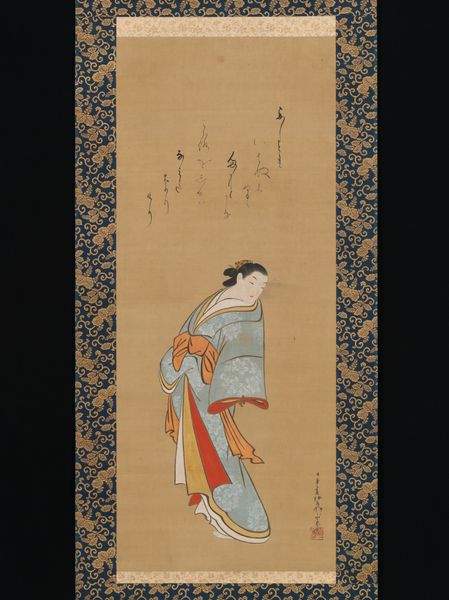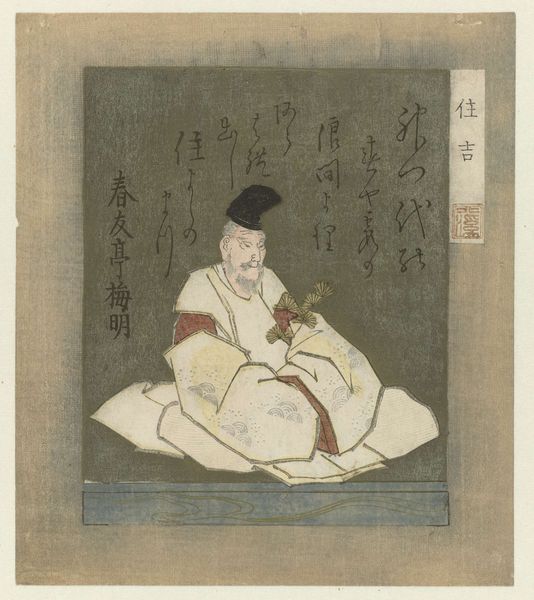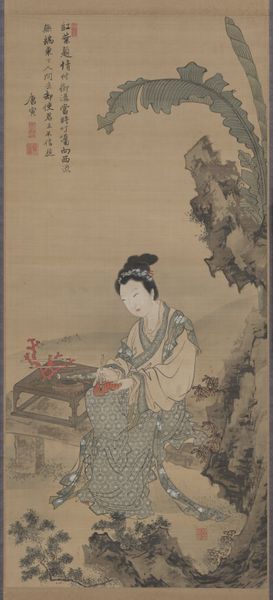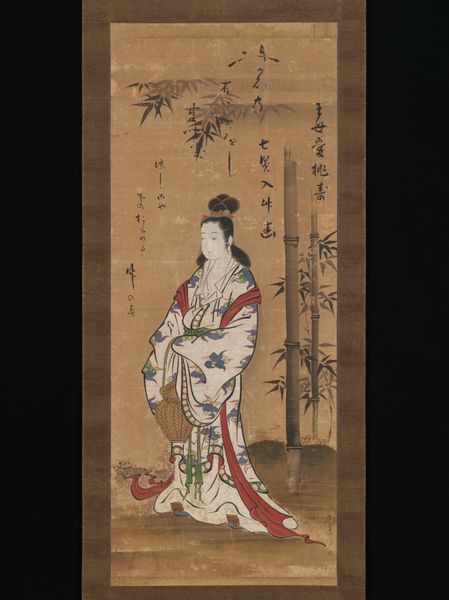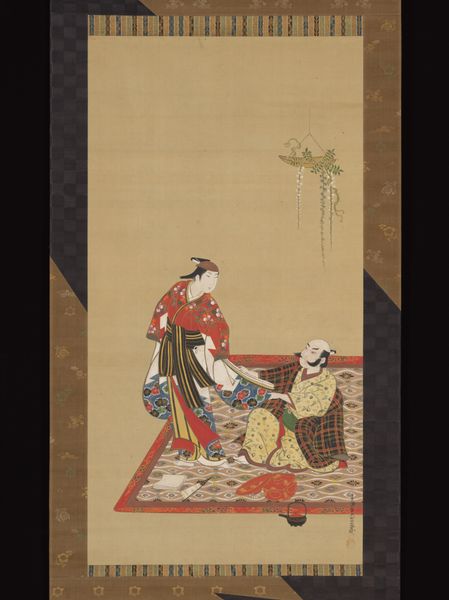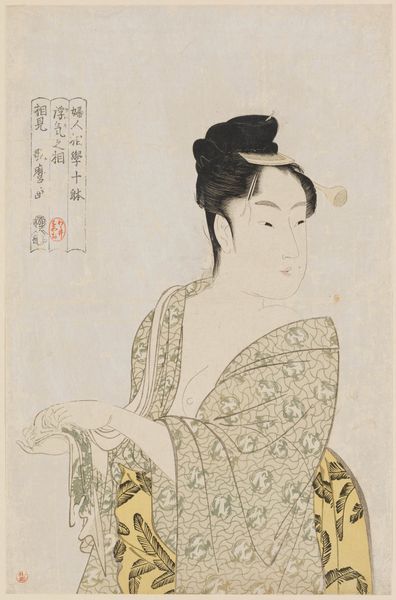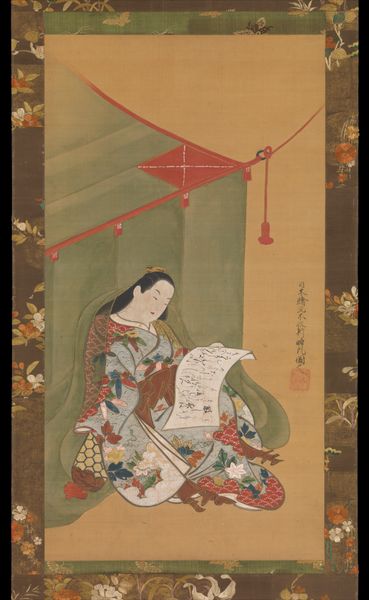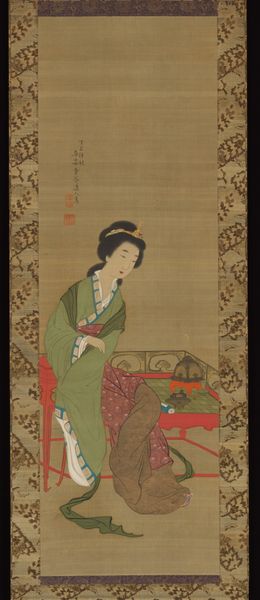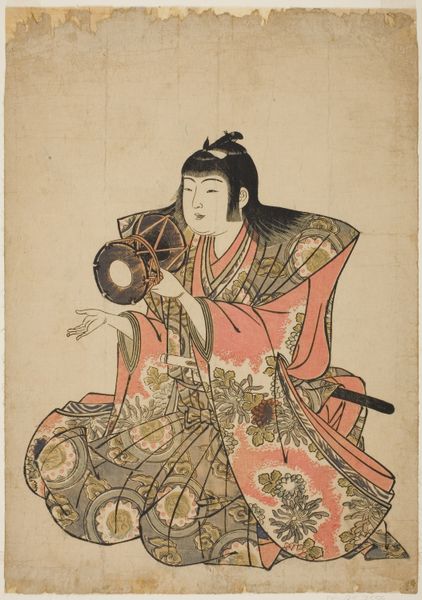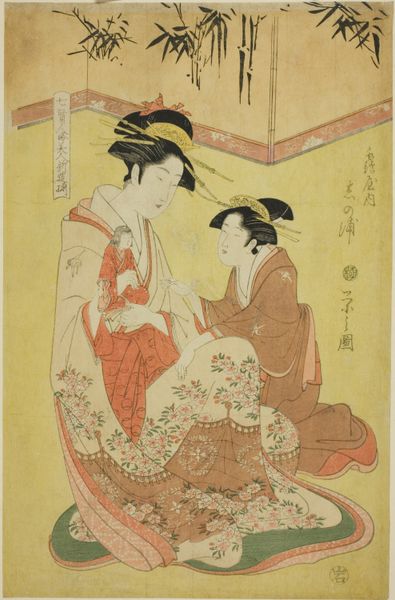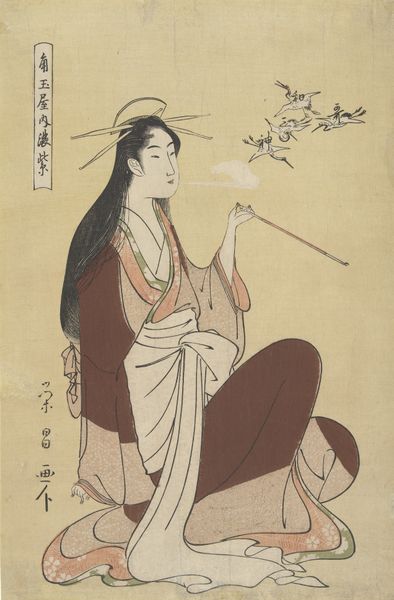
The Actor Arashi Kitsusaburō I (Kichisaburō II) as Prince Koretaka 1821
0:00
0:00
painting, print, wood
#
portrait
#
painting
# print
#
asian-art
#
ukiyo-e
#
folk art
#
figuration
#
wood
Dimensions: Image: 26 x 13 1/2 in. (66 x 34.3 cm) Overall with mounting: 58 1/2 x 17 1/8 in. (148.6 x 43.5 cm)
Copyright: Public Domain
Curator: Taking a look, this portrait captures the actor Arashi Kitsusaburo I as Prince Koretaka. Painted in 1821 by Shunkosai Hokushu, it’s a woodblock print, an example of Ukiyo-e artistry, housed at the Metropolitan Museum of Art. Editor: My immediate impression is…wistful? The way the light falls, that sort of weary repose – there's a sense of subdued drama about this piece. It feels quiet but tense, like right before a storm. Curator: The Ukiyo-e genre frequently represented Kabuki actors and courtesans, immortalizing figures of the floating world. There’s an interplay here between performance and identity; it makes me consider the fluidity of social roles and representation. Editor: I'm drawn to that dichotomy you point out, it resonates within today’s societal reframing around the performative nature of identity. But thinking of Prince Koretaka, exiled and forced into monastic life, it adds an extra layer. I can't help but interpret the subtle discomfort as mirroring his imposed detachment from society and power. Curator: Absolutely. The beauty of art lies in this dialogue across centuries! I think it speaks volumes to see this individual, already representing a role within a play, filtered through Hokushu's artistic choices. Is he conveying the *actor's* interpretation, or the *artist's*? A question of authorship rises, doesn't it? What exactly is being framed here? Editor: It begs the question – in depicting a performer enacting a prince removed from his station, is Hokushu commenting on the performativity inherent to *all* social strata? A clever way to bypass censorship perhaps? And considering Ukiyo-e prints were accessible to a wider audience, there's a democratizing element as well – high art for the masses. Curator: That’s precisely why Ukiyo-e is so compelling; it intertwines high culture and popular accessibility. Plus, you see the tension in those hands! The delicate fan against the fur, the patterns fighting for your attention. There's a controlled chaos that mirrors, perhaps, the inner turmoil of the exiled prince? Or the artist? Or us? Editor: Precisely! A multitude of questions without easy answers! Which might be, I guess, the true intention of art. It pushes us beyond our comfort and calls us to consider all perspectives. Curator: To me, the lasting impression lies in its delicate balance: blending historical narrative, social commentary, and purely artistic choices. It offers many interpretations! Editor: For me, it highlights the capacity art has to invite dialogues on individual struggles against larger power structures – not merely back then, but even more so, today.
Comments
No comments
Be the first to comment and join the conversation on the ultimate creative platform.
